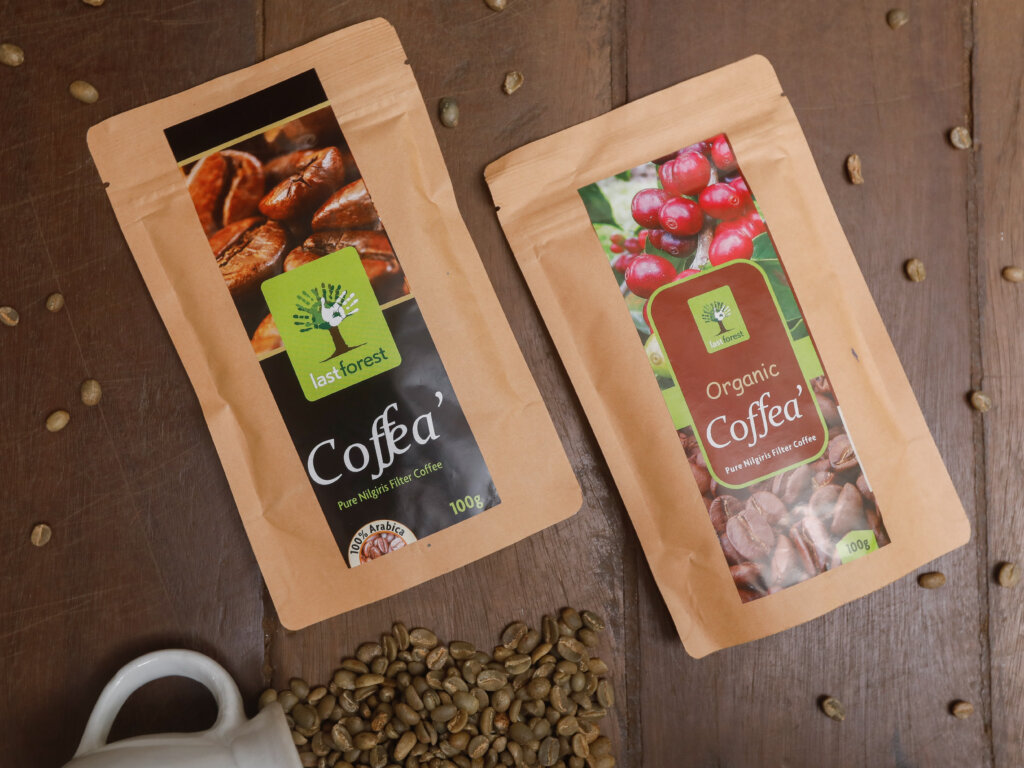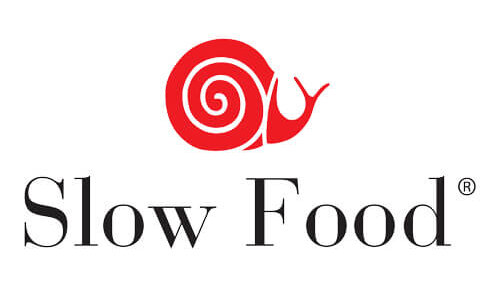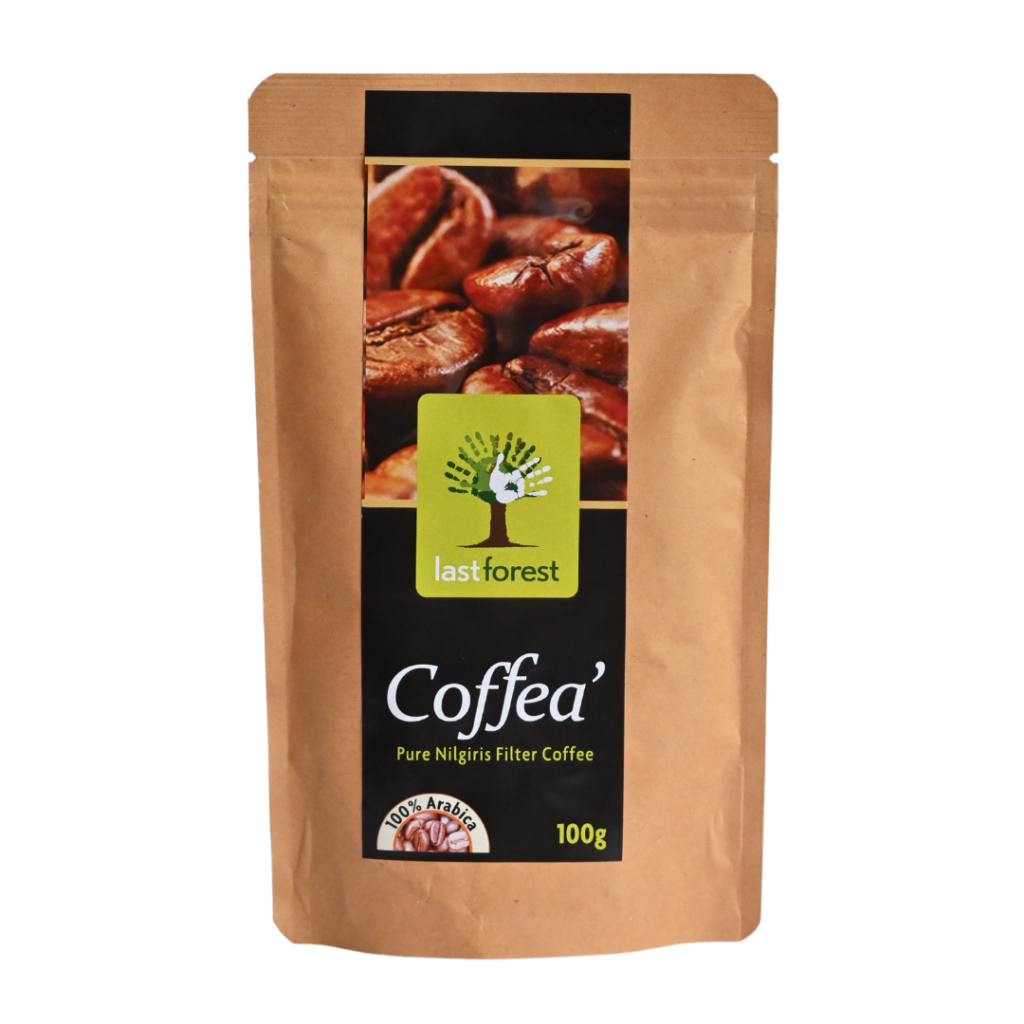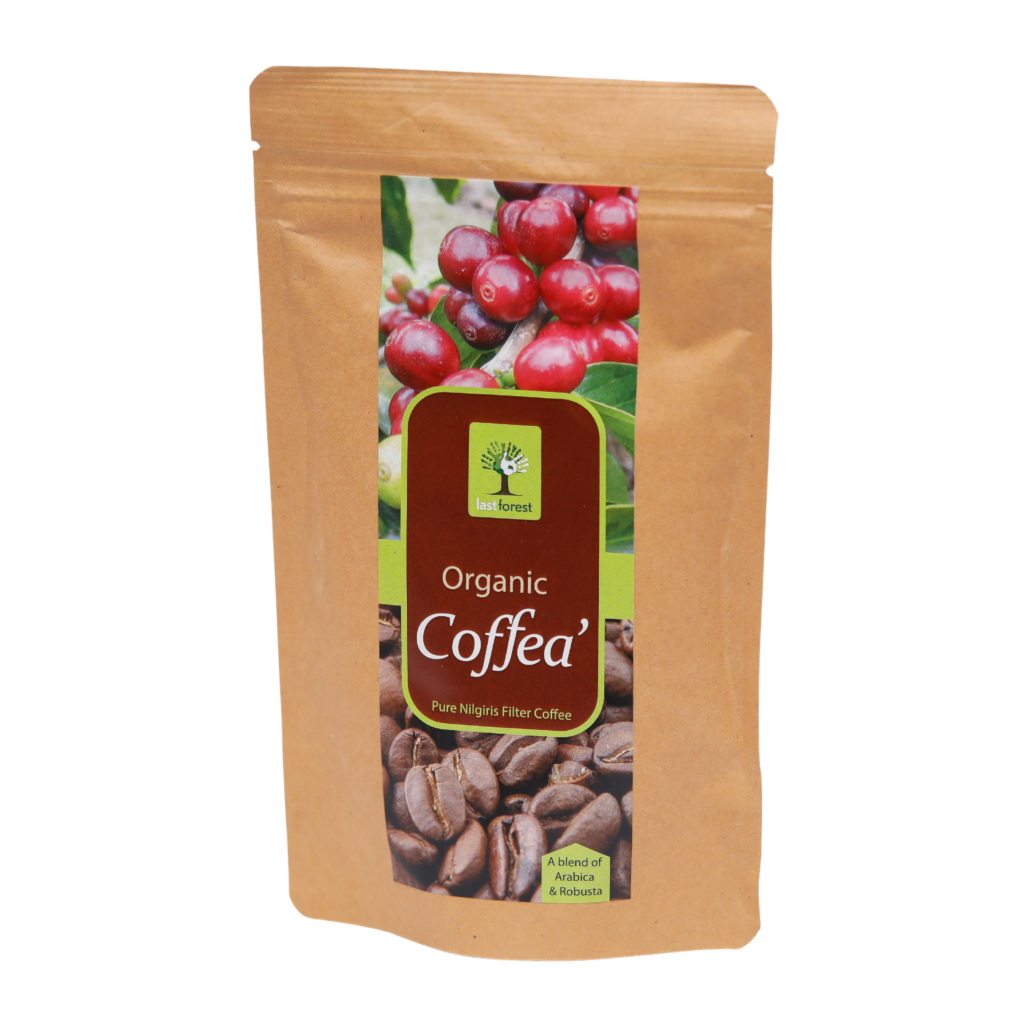coffee

Coffee has been cultivated in The Nilgiris since the 1830s. Robusta, Arabica and Liberica are the three coffee kinds cultivated by the indigenous farmers.
The indigenous communities use traditional agricultural practices to grow and harvest the coffee.The elevation is usually between 900- 1500m above sea level. They are shade grown and are intercropped with various crops like Silver Oak, Mango, Jackfruit, Millets and Spices.
The berries picked by the farmers are hand pressed with a river stone or a hand-operated disc pulper to remove the fruit coat. The beans are then sun-dried after which they are roasted and ground.
Our coffee is PGS (Participatory Guarantee System) certified. Keystone Foundation plays a big role in facilitating the PGS certification which is a peer review system. The coffee is marketed through Last Forest Enterprises as roasted beans and coffee powder.
Last Forest supports indigenous communities to sustain themselves by empowering their skill sets and bringing economic growth.



Coffee Harvest
Bio-organic inputs such as Panchakaaviya and Poochiverati, a concoction made by the indigenous communities are used in coffee cultivation. They also use leaf litter as manure.
The harvest is usually between November and March, but recently due to varied rainfall, the harvest time has seen a huge change.
The harvesting is often hindered by wild Gaurs and Elephants. Monkeys are also problems for the cultivators.
The harvest is done usually by family members who carefully strip the berries which are then sorted and pulped manually. In some villages, pulping has been made easy by the Coffee Board by providing pulping machines. There is also the provision at the production units of Aadhimalai where the community can use the pulping machine and the drying yard.
Drying
After the pulping process, the coffee is dried as a parchment on the roof-tops and in the front yards of their houses. It is then roasted manually as required.
Procurement
The coffee is sold to Aadhimalai, our producer organisation, which acts as an intermediary to procure forest produce from the communities at fair fixed prices.
The community farmers sell coffee in every possible form, be it coffee parchment, berries, dried berries or green beans. The average yield of coffee in the community owned farms would come around 40 tons. A premium price is paid to the producers.




Slow Food Coffee Coalition
The Slow Food Coffee Coalition is an open network uniting all participants involved in the coffee supply chain, from farmers to consumers, who think and act collaboratively towards the common goal of Good, Clean, and Fair coffee for all. The aim is to create connections and improve the relationship between producers and consumers, empowering farmers by increasing their visibility and promoting the identity and the knowledge of coffee.
Arabica
Height – 2-3 metres
Type – Evergreen Bush with Large oval shaped leaves
Growing Conditions – This plant is cultivated in humid zones and deep, crumbly soil
Taste – Sweet taste, with flavour notes of chocolate and sugar. They often also have hints of fruits or berries.
Robusta
Height – 4.5-6 metres
Type – Robust Shrub or a small tree
Growing Conditions – They grow well at lower altitudes than Arabica coffee, expanding its geographic possibilities.
Taste – Stronger, harsher and more bitter taste, with grainy or rubbery overtones.
Liberica
Height – 18-20 metres
Type – Tree
Growing Conditions – light shade and well-drained soils and can succeed in poorer soil than Arabica.
Taste – Woody and is generally bitter.

Arabica coffee
Arabica coffee is a species of coffee known for its mild, smooth flavor and aromatic qualities. It is one of the most popular coffee species globally.
Coffee beans from the Nilgiris region in India are renowned for their unique flavor profile. The high altitude, rich soil, and distinct climate create a coffee with a bright acidity and floral notes.
Nilgiris Arabica coffee beans are typically harvested by hand-picking. Skilled workers select only ripe cherries to ensure the best quality.
Yes, Nilgiris Arabica coffee is typically 100% pure Arabica. The Nilgiris region is known for cultivating Arabica coffee exclusively.
Nilgiris Arabica coffee offers a flavor profile that includes bright acidity, floral and fruity notes, and a mild, well-balanced taste.
Store the coffee in an airtight container in a cool, dark place away from direct sunlight. This helps preserve its aroma and flavor.
You can brew Nilgiris Arabica coffee using various methods, including drip brewing, French press, pour-over, or espresso. The choice depends on your taste preferences.
Yes, Nilgiris Arabica coffee typically contains a moderate amount of caffeine, which is lower than Robusta coffee.
Yes, Nilgiris Arabica coffee can be used for espresso. It may provide a milder espresso compared to blends with Robusta beans.
Many coffee farms in Nilgiris practice sustainable farming methods to preserve the environment and ensure fair labor practices. Look for certifications like Fair Trade or Rainforest Alliance if you want to support sustainability.
Like other Arabica coffees, Nilgiris Arabica coffee may have potential health benefits, such as antioxidants and improved alertness. However, it’s essential to consume it in moderation.
Yes, you can use Nilgiris Arabica coffee in various recipes, including desserts, marinades, and rubs, to impart a unique coffee flavor.
Freshness can vary, but ideally, consume it within 2-4 weeks after opening to enjoy the best flavor. Storing it properly is key to preserving freshness.
Arabica & Robusta Blend
Nilgiri Arabica and Robusta Blend Coffee is a unique coffee blend cultivated in the Nilgiri region of India, which combines the qualities of Arabica and Robusta coffee beans.
The Nilgiri region is renowned for its high-quality coffee production, thanks to its unique climate and elevation.
The blend typically offers a balanced flavor profile with the brightness and acidity of Arabica and the strength and body of Robusta.
The Nilgiri region is situated at an elevation ranging from 1,000 to 2,634 meters (3,281 to 8,642 feet) above sea level.
Coffee cherries are hand-picked when they are ripe, usually during the harvest season, which varies from November to January.
Nilgiri coffee is unique due to the region’s distinct climate, altitude, and blend composition, which results in a rich and well-balanced flavor.
Nilgiri coffee can be brewed using various methods, including pour-over, French press, espresso, and drip coffee machines, depending on your preferences.
Expect a well-balanced cup with mild acidity, nutty and chocolatey notes from the Arabica, and a hint of earthiness and robustness from the Robusta.
Yes, this coffee can be used for espresso, either on its own or as part of a blend to add depth and crema.

